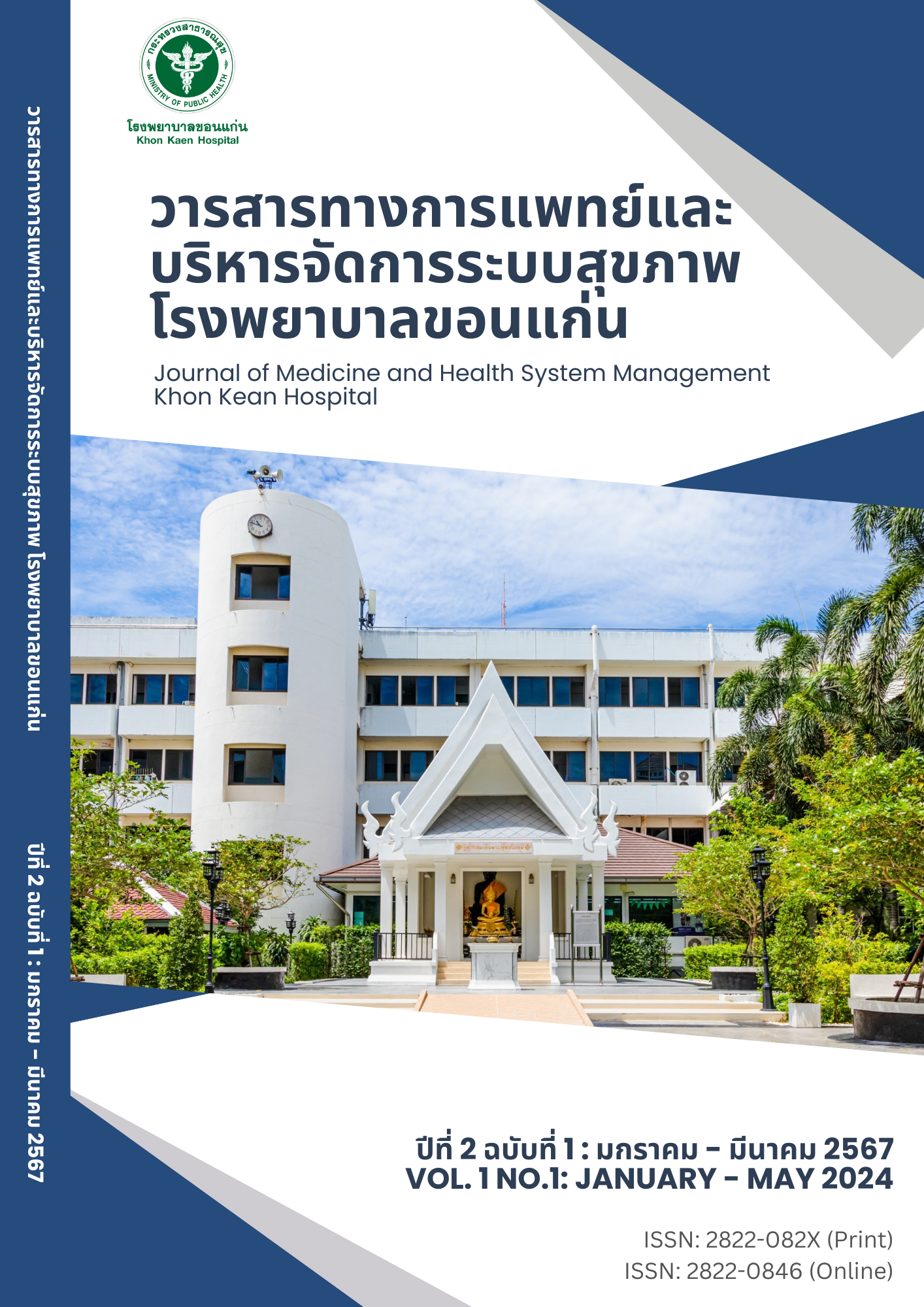การพยาบาลผู้ป่วยโรคหลอดเลือดสมองแตกที่ได้รับการผ่าตัดเปิดกะโหลกศีรษะเพื่อระบายเลือดออก ในระยะวิกฤต: กรณีศึกษา 2 ราย
บทคัดย่อ
Nursing care of hemorrhagic stroke patients undergoing critical craniotomy : 2 cases study
Supaporn Gulsuwan*
Abstract
Background: Hemorrhagic stroke is a critical neurological condition with complex and
severe complications, significantly increasing the risk of mortality or high disability for patients.
Observational symptom monitoring and appropriate support are crucial from the beginning of
admission, throughout the critical phase, and into the recovery phase, aiming to ensure patient
safety from complications, minimize the impact of complications, and promote a good quality
of life.
Objective: To examine the nursing care of patients with hemorrhagic stroke undergoing
critical craniotomy: A study of two cases.
Methodology: A retrospective case review was conducted at Khon Kaen Hospital.
Medical records of 2 patients were examined, involving obtaining an illness history from
relatives and conducting a physical examination based on the nursing process to determine
nursing diagnoses within the FANCAS framework, including Fluid balance, Aeration, Nutrition,
Communication, Activity, and Stimulation.
Results: In the case study, both patients had hypertension and non-compliance with
continuous medication, which were significant factors contributing to hemorrhagic stroke. After
craniotomy, both cases experienced complications. The first patient received nursing care to
resolve the complications and prevent a critical condition. However, the patient with disabilities
required ongoing care for recovery. The other case received care and resolution of
complications; however, the symptoms worsened, leading to comprehensive supportive care to
reduce suffering and focus on ensuring a good quality of life for both the patient and their
family.
Conclusion: Patients with hemorrhagic stroke undergoing craniotomy are in a critical
condition, and the nursing process is crucial to ensure safety, prevent potential complications,
reduce mortality rates, and minimize disabilities.
Keywords: Nursing Care, Hemorrhagic Stroke, Craniotomy
ดาวน์โหลด
เผยแพร่แล้ว
รูปแบบการอ้างอิง
ฉบับ
ประเภทบทความ
สัญญาอนุญาต
ลิขสิทธิ์ (c) 2024 กลุ่มภารกิจด้านการพยาบาล โรงพยาบาลขอนแก่น

อนุญาตภายใต้เงื่อนไข Creative Commons Attribution-NonCommercial-NoDerivatives 4.0 International License.
บทความที่ได้รับการตีพิมพ์เป็นลิขสิทธิ์ของ กลุ่มภารกิจด้านพยาบาล โรงพยาบาลขอนแก่น
ข้อความที่ปรากฏในบทความแต่ละเรื่องในวารสารวิชาการเล่มนี้เป็นความคิดเห็นส่วนตัวของผู้เขียนแต่ละท่านไม่เกี่ยวข้องกับโรงพยาบาลขอนแก่น หรือบุคลากรในโรงพยาบาลแต่อย่างใด ความรับผิดชอบองค์ประกอบทั้งหมดของบทความแต่ละเรื่องเป็นของผู้เขียนแต่ละท่าน หากมีความผิดพลาดใดๆ ผู้เขียนแต่ละท่านจะรับผิดชอบบทความของตนเองแต่ผู้เดียว




